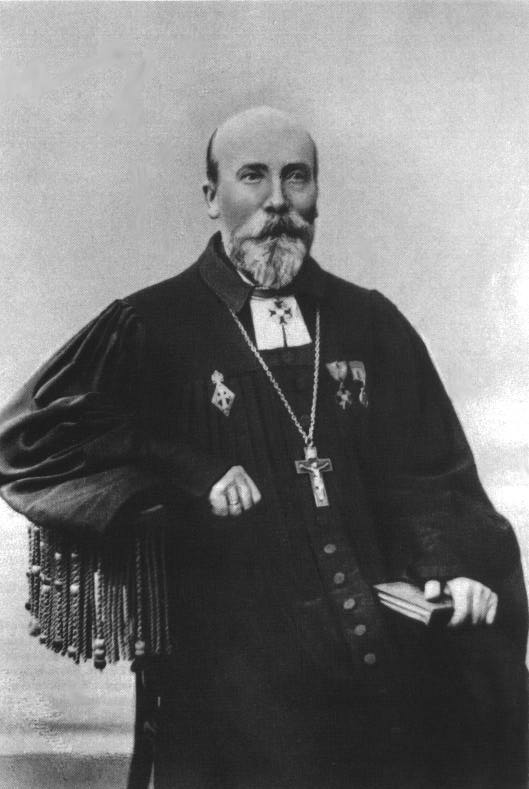Jakob Hurt on:
[Wikipedia]
[Google]
[Amazon]
 Jakob Hurt ( in Himmaste – in
Jakob Hurt ( in Himmaste – in
Auvilistlased
eys.ee
 Jakob Hurt ( in Himmaste – in
Jakob Hurt ( in Himmaste – in St Petersburg
Saint Petersburg ( rus, links=no, Санкт-Петербург, a=Ru-Sankt Peterburg Leningrad Petrograd Piter.ogg, r=Sankt-Peterburg, p=ˈsankt pʲɪtʲɪrˈburk), formerly known as Petrograd (1914–1924) and later Leningrad (1924–1991), i ...
) was a notable Estonian folklorist, theologian
Theology is the systematic study of the nature of the divine and, more broadly, of religious belief. It is taught as an academic discipline, typically in universities and seminaries. It occupies itself with the unique content of analyzing the ...
, and linguist
Linguistics is the scientific study of human language. It is called a scientific study because it entails a comprehensive, systematic, objective, and precise analysis of all aspects of language, particularly its nature and structure. Linguis ...
. With respect to the last, he is perhaps best known for his dissertation on "pure" -ne stem nouns ("Die estnischen Nomina auf -ne purum", 1886).
Also known as the "king of Estonian folklore", Hurt planned the publication in the 1870s of a six volume series called '' Monumenta Estoniae Antiquae''. Hurt organised around 1400 volunteer collectors via a press campaign, who visited almost every house in Livonia
Livonia ( liv, Līvõmō, et, Liivimaa, fi, Liivinmaa, German and Scandinavian languages: ', archaic German: ''Liefland'', nl, Lijfland, Latvian and lt, Livonija, pl, Inflanty, archaic English: ''Livland'', ''Liwlandia''; russian: Ли ...
collecting around 124,000 pages of folklore. Due to financial difficulties, however, only two volumes of folk songs were published in 1875–76, entitled ''Vana kannel'' (Old Zither). Two more volumes were published in 1938 and 1941. Hurt also published a three volume collection called ''Setukeste laulud'' (The Setos
Setos ( seto, setokõsõq, , et, setukesed, ) are an indigenous Balto-Finnic peoples, Finnic peoples and linguistic minority that have historically lived in the borderlands between modern day Estonia and Russia. Setos have historically spoken ...
' Songs) between 1894 and 1907.
There are monuments to him at Tartu
Tartu is the second largest city in Estonia after the Northern European country's political and financial capital, Tallinn. Tartu has a population of 91,407 (as of 2021). It is southeast of Tallinn and 245 kilometres (152 miles) northeast of ...
and in Põlva
Põlva () is a town in southeastern Estonia, the capital of Põlva County, and the centre of Põlva Parish.
Põlva is home for the Intsikurmu Song Festival Grounds, which regularly hosts concerts and summer activities, situated in a small for ...
. Tartu, Põlva, Otepää
Otepää (formerly Nuustaku) is a town in Valga County, southern Estonia, it is the administrative centre of Otepää Parish. Otepää is a popular skiing resort, popularly known as the "winter capital" of Estonia (in contrast to the "summer ca ...
and Himmaste also have a street named after him. He was also featured on the 10 krooni note.
Membership in organisations
Jakob Hurt was an honorary alumnus of theEstonian Students' Society
The Estonian Students' Society ( et, Eesti Üliõpilaste Selts; commonly used acronym: EÜS) is the largest and oldest all-male academical student society in Estonia, and is similar to the Baltic German student organizations known as corporat ...
.eys.ee
Bibliography
* Rudolf Põldmäe, "Noor Jakob Hurt". Eesti Raamat,Tallinn
Tallinn () is the most populous and capital city of Estonia. Situated on a bay in north Estonia, on the shore of the Gulf of Finland of the Baltic Sea, Tallinn has a population of 437,811 (as of 2022) and administratively lies in the Harju ' ...
1988
* "Jakob Hurt 1839-1907". Koostanud Mart Laar
Mart Laar (born 22 April 1960) is an Estonian politician and historian. He served as the Prime Minister of Estonia from 1992 to 1994 and from 1999 to 2002. Laar is credited with having helped bring about Estonia's Economy_of_Estonia#Restoration_o ...
, Rein Saukas, Ülo Tedre. Eesti Raamat, Tallinn, 1989
* Mart Laar, "Raamat Jakob Hurdast". Ilmamaa, Tartu
Tartu is the second largest city in Estonia after the Northern European country's political and financial capital, Tallinn. Tartu has a population of 91,407 (as of 2021). It is southeast of Tallinn and 245 kilometres (152 miles) northeast of ...
1995
References
External links
1839 births 1907 deaths People from Põlva Parish People from Kreis Werro Estonian Lutheran clergy Linguists from Estonia Estonian folklorists 19th-century Estonian people University of Tartu alumni University of Helsinki alumni {{Theologian-stub